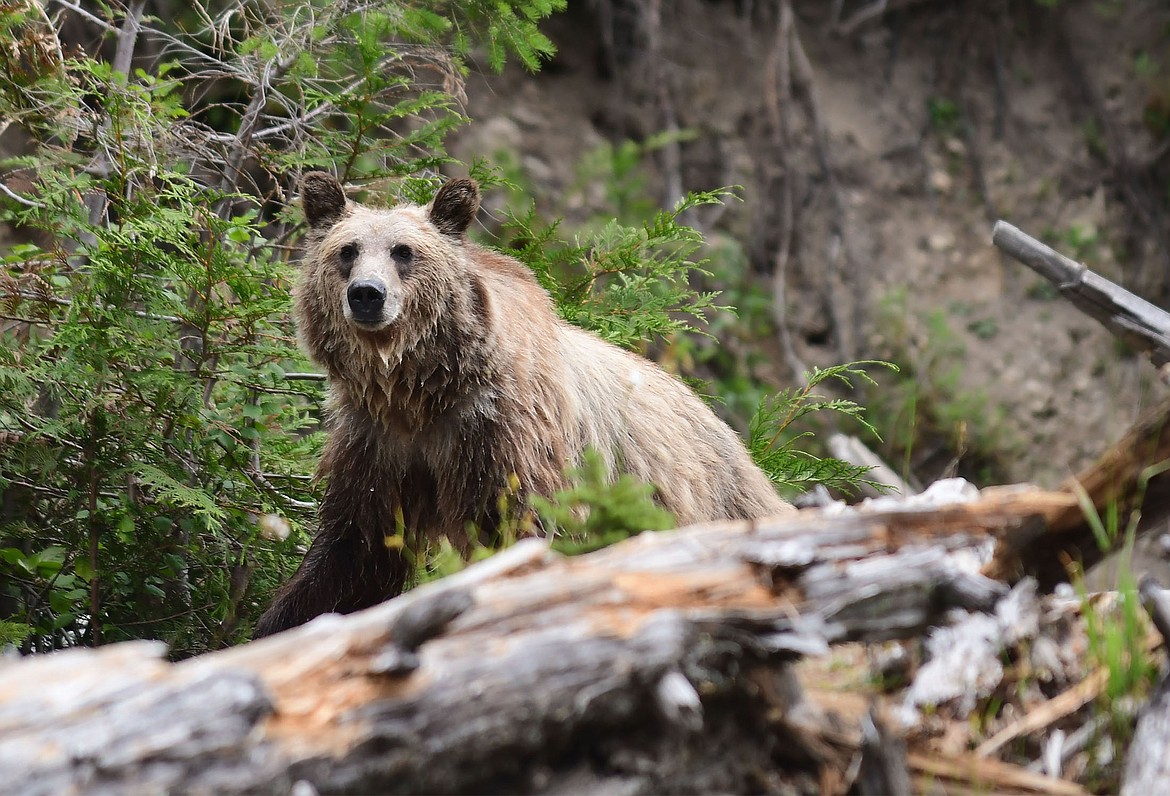Court battle over Forest roads continues
By CHRIS PETERSON
Hungry Horse News
The Swan View Coalition and Friends of the Wild Swan recently filed suit against the U.S. Fish and Wildlife Service, claiming a recent revised biological opinion doesn’t do enough to protect threatened bull trout and grizzly bears on the Flathead National Forest.
At the heart of the case is how the Flathead National Forest manages roads it builds, opens and closes under the 2018 Forest Plan.
Prior to the 2018 Forest Plan, the Forest managed its roads under what was known as Amendment 19. That plan called for “decommissioning” roads in grizzly bear and bull trout habitat so that road densities were low enough to protect the bears and the trout.
Decommissioning meant about the first 200 to 600 feet of a closed road were torn out and the culverts were taken out of the roads as well.
The culverts were taken out because they would, eventually fail, and when a culvert fails, can wash fine sediment into a stream, which harms spawning bull trout.
The roads were also decommissioned to keep people from going around gates or or other barriers with motorized vehicles.
Previous studies have shown that bears and roads don’t go together well. A landmark study in the 1990s by biologists Tim Manley and Rick Mace noted that bears for the most part, avoided roads. Open roads also result in higher bear deaths due to poaching and other interactions with humans.
But the under the 2018 Forest Plan, roads don’t have to be decommissioned; the entrance just has to be blocked or gated, what the Forest Service called “impassable.”
“Impassable roads are “not counted in the total motorized route density as long as the road (generally the first 50 to 300 feet) has been treated to make it inaccessible to wheeled motorized vehicles during the non denning (grizzly bear) season,” the 2018 plan states.
Swan View and Friends of the Wild Swan, two local environmental groups, sued the Flathead National Forest on that point and others and prevailed in 2021.
In that case, Missoula District Court Judge Donald Molloy ordered the Fish and Wildlife Service to take another look at its biological opinion and fully consider the 2018 plan impacts on bull trout and grizzlies.
The Service did that, and in February, it issued a revised biological opinion. The 466-page document has a lot to say, but it doesn’t fundamentally alter its opinion on the 2018 plan.
On the subject of roads and bears, in essence it agrees withe the Forest Service that roads don’t have to be completely torn out after they’re closed to motorized and public use.
It points to a 2020 study by the Forest Service that found that most road closure methods were effective. Road closures were “ranging from a 90% effectiveness rate on the Swan Lake District to a 97% effectiveness rate on both the Tally Lake and Spotted Bear Districts … Overall, 92% of road closure devices forest-wide were found to be effective at restricting unauthorized, public use. This is consistent with monitoring conclusions in prior years,” the Service noted.
The Forest Service continues to consider and implement projects with new roads — all told, in recent years, it has implemented or proposed projects with close to 70 miles of new or reopened roads. Prior to the 2018 plan, it was closing roads — about 700 miles of them.
The U.S. Fish and Wildlife Service also doesn’t support carte blanche road building, either, and notes that each project that builds roads in bear habitat must be examined by the Service for impacts to bears.
But having said that, the Forest Plan, at least for now, is amenable.
“In summary, the existing access management conditions are good to very good for grizzly bears in the Northern Continental Divide Ecosystem, with a few site specific exceptions. It is our opinion that motorized access is managed across the NCDE at levels that are evidently conducive to grizzly bear population growth and conserve grizzly bear habitat,” the Service said in its biological opinion.
On bull trout, however, the Service seems to be saying it needs to look at roads and decommissioning on a case-by-case basis, rather than an entire plan. But it does admit the plan could harm the fish.
“In summary, the Service concludes that the (2018 plan) direction regarding road decommissioning has the potential to adversely affect bull trout and bull trout critical habitat. This potential exists because the Forest Service has removed the requirement to remove culverts when decommissioning roads. While this potential exists, it is not possible to determine the location, duration, or extent of any adverse effects because the (2018 plan) is not proposing an explicit project, rather it provides direction that the Forest Service will use to plan future actions,” it concludes.
For Swan View and Friends of the Wild Swan, the views are untenable.
“For the second time, the Fish and Wildlife Service has greenlighted the Flathead’s harmful new management direction without grappling with the adverse consequences of that decision for grizzly bear and bull trout, as governing law requires,” the groups claim in their suit.

